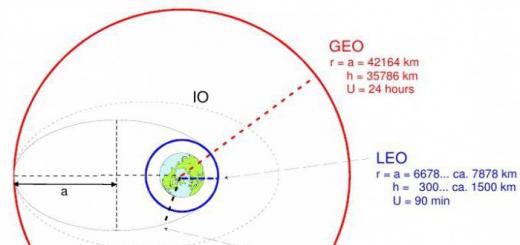Publication date 06/13/2018
Features of the use of grammatical inversion in modern English language
Komyagina Olga Viktorovna
Candidate of Philology, Associate Professor of the Department of English, Vladimirsky State University them. A. G. and N. G. Stoletovs, Russian Federation, Vladimir, [email protected]
Karpova Anastasia Vladimirovna
4th year student of the Department of English, Vladimir State University named after V.I. A. G. and N. G. Stoletovs, Russian Federation, Vladimir, [email protected] l.com
Resume: The article is devoted to a comprehensive study of the features of the use of grammatical inversion, which is an actual problem in the grammar of the English language. The article reveals the content of the concept of "grammatical inversion", its difference from the stylistic and dual cases of use. Based on the study of this phenomenon, it has been established that the order of words in an English sentence is usually fixed. However, in some cases, inverted word order is also allowed. Linguists distinguish two types of inversion, grammatical and stylistic, the line between which is thin, therefore it is of interest for study. The results of the study allow us to practically verify how common grammatical inversion is in the speech of native speakers.
Keywords: English language, inversion, grammatical inversion, stylistic inversion, word order, grammar
Komyagina Olga Viktorovna
PhD in Philological sciences, Associate Professor of English Language department, Vladimir State University Named after Alexander and Nikolay Stoletovs, Russia, Vladimir
Karpova Anastasia Vladimirovna
4th year Student of English Language department, Vladimir State University Named after Alexander and Nikolay Stoletovs, Russia, Vladimir
Abstract: The article is dedicated to research study of the peculiarities of the use of grammatical inversion, which is an actual issue of the English grammar. The article deals with the definition of grammatical inversion, its difference from the stylistic inversion and ambiguous cases of its use. It was ascertained, that the word order in English sentence is fixed. However, there are some cases of using inverted word order in the language. Linguists speak about two kinds of inversion – grammatical and stylistic – the difference between which is quite ambiguous. Thus, a study of this phenomenon is of great interest. The results of the research show to what extent grammatical inversion is common in the speech of the native speakers.
Keywords: English, inversion, grammatical inversion, stylistic inversion, word order, grammar
The English language is characterized by a fixed word order in a sentence, that is, the subject comes first, the predicate comes second. However, there are a number of cases where this rule is violated. Reverse word order constructions are called inversions. Longman's dictionary gives the following definition of this phenomenon: “Inversion is the operation of rearranging the members of a sentence, as a result of which the order of words in two statements becomes reversed. For example, in declarative sentences in English, the auxiliary verb comes after the subject ( I will help you), in questions - before the subject ( Will you help me?)» .
Inversion performs several functions in the language: logical, grammatical, emotional, communicative, pragmatic and structural-semantic.
Usually, domestic linguists(I.V. Arnold, I.I. Profit, V.A. Kukharenko) distinguish between grammatical and stylistic inversion. Foreign grammarians, speaking about changing the order of words in a sentence, use terms such as inversion and "fronting". Despite the difference in terms, designs with "fronting" imply a stylistic inversion.
A grammatical inversion is a structure in which the verb predicate precedes the subject. At the same time, its two main forms are distinguished: complete inversion (the predicate is in front of the subject - Just as important is the question of tolerance) and partial inversion (the auxiliary verb is in front of the subject - Never have I seen such a handsome man) . Michael Strumpf and Oriel Douglas also distinguish inversion, in which the subject comes after the verb ( under the treewas lyinga dog). Partial inversion is very common in the language, as it involves the use of forms with the auxiliary verb do. Thanks to this, both inversion and direct word order are combined ( Do they live nearby?) .
Grammar inversion is widely used in magazines and newspapers. This is due to the fact that it does not depend on personal attitude and is governed by the grammatical rules of the language.
Foreign linguists (Sylvia Chalker, Michael Swan, Mark Foley, Martin Hugins) in addition to inversion also distinguish such a thing as "fronting". This is a structure in which part of the sentence is placed first in order to focus on the important ( WineI can't drink it gives me a headache). A part of a sentence means an adjective, adverbial phrase, addition or complement. It is worth noting that when an adjective or circumstance is placed in the initial position, the word order becomes inverted. However, such foreign scientists as Mark Foley and Sylvia Chalker do not attribute these permutations of the members of the sentence to inversion, calling this kind of construction “fronting”.
In the literary language, the complement or complement is often placed in the initial position. In this case, the subject and predicate do not change places:
The loft she rarely visited.
satisfied I was not.
I. V. Arnold understands stylistic inversion as a violation of the usual arrangement of the members of the sentence, as a result of which one of them is highlighted and receives special connotations of emotionality or expressiveness.
Inversion as a stylistic device serves as a means of enhancing the expressiveness and expressiveness of a work of art. From the point of view of stylistics, the violation of the traditional word order imposes additional semantic shades, strengthens or weakens the semantic load of a certain sentence member.
Thus, grammatical inversion changes the grammatical meaning of the statement and presupposes the precedence of the verb-predicate to the subject. Stylistic inversion singles out one of the members of the sentence, as a result of which it gives the statement a certain emotional coloring. The verb does not always precede the subject.
In the course of studying the problem of the functioning of grammatical inversion in English, we conducted a study, the essence of which was to establish the features of the use of grammatical inversion in the speech of native speakers. During the study, twenty native speakers living in the United States (Indiana, Ohio, Michigan, Colorado, Montana, New York, Washington) were interviewed.
We proposed a questionnaire consisting of 30 pairs of sentences, identical in meaning and lexical content, but differing in word order. The subject's task was to choose between two sentences and brief justification of your choice.
As noted by many grammarians, the English language is characterized by a rigid word order in a sentence. But there are a number of cases where inverted and direct word order are interchangeable. Such dual cases of using grammatical inversion were used by us when creating the questionnaire.
Martin Hewings, in his Advanced Grammar in Use, argues that we can use inverted word order in sentences beginning with ‘so + adjective + that". Here, grammatical inversion puts emphasis on the adjective, thereby highlighting it:
So popular did the song become, that it sounded almost in every movie.
A similar situation exists with statements beginning with the construction such + to be, which emphasizes the degree or magnitude of the phenomenon described in the sentence:
Such is the public indignation that meetings are being organized every now and then all over the country.
As a result of the survey, 100% of respondents chose the variant with direct word order, arguing that the noun should come before the descriptive adjective. The variant with the inverted word order was perceived as incorrect.
Grammatical inversion is widely used in comparisons with conjunctions as, than, so. Curiously, the option ‘The garden was beautiful as was the house" chosen by 100% of the respondents. One of the arguments in favor of this choice was that the sentence should not end with the verb ‘was’. Others justified the legitimacy of this kind of construction of the sentence by the fact that the inverted word order is permissible in comparisons.
The Oxford English Grammar Course, edited by Catherine Walker and Michael Swan, mentions the grammatical inversion model with conjunction than:
Joe tends to grumble more often than does his elder brother.
As the survey shows, this model is actually not very common in the speech of native speakers. 90% of respondents choose the option with direct word order (Fig. 1). It should be noted that among
those who chose the variant with grammatical inversion consider this model to be correct and allow its use in speech, since the utterance is based on a comparison ( than doeshis
elder
brother).
Figure 1. Inversion with unionthan
Michael Swan describes among the cases of using grammatical inversion the variant with the adverb of place or direction as a fairly common occurrence in the English language. This type of circumstance is, as a rule, at the beginning of the sentence, while the intransitive verb precedes the subject. This model of grammatical inversion is especially common in literary writing, in descriptions, and is used when a new unknown object is introduced to the speaker:
southward stretched the valley .
As a result of the survey, this model was also perceived by native speakers as incorrect. 100% of respondents chose the option with the traditional English direct word order.
In English, it is permissible to omit the union if in conditional clauses. Thus, the grammatical inversion is used in the subordinate clause, which gives the statement an official character:
Should you meet him, please tell him the news.
100% of respondents chose the option with inverted word order. Many explained their choice by the fact that the union is not needed at all. Someone noted the variant with inversion as the most euphonious. One of the respondents stated that the direct word order option would be correct if it did not contain a modal verb should. In general, both options were noted by native speakers as equally true.
Afterexpressions It is also possible to use inversion:
Not only was she rude but she didn't even apologize.
The opinions of the respondents in this case differed (Fig. 2). One half chose inversion, the other half chose direct word order. For someone, the inversion option could have the right to exist if the first part of the sentence with not only contacted the second but also. The respondents were given the following options: ‘Not only was she rude but she also didn’t apologize’. For others, both options seemed equally valid, but the inversion option was more preferable, as it sets the emphasis on verbs ( was, sorry), which denote the actions performed by the object (s he).

Figure 2.Inversiononafterexpressions not only, only if, only after
Grammarians argue that the word order in the author's speech, which traditionally accompanies direct speech, can also be inverted:
‘It's too late,’ said Tom.
An exception are cases when the subject in the author's speech is expressed by a pronoun. In this case, word order can only be direct: ‘ Let` s go, 'she said .
Most of the respondents chose the option with inverted word order. 20% nevertheless preferred the variant with the direct word order, which seems to them more correct and “aesthetic” (Fig. 3).

Even though the word little belongs to the group of negative adverbs, which also include never, hardly scarcely and others already mentioned and discussed in this article, the majority of respondents chose the sentence with inverted word order (Fig. 4):
Little Michael knows about the world.
For some, this option turned out to be more neutral. Someone marked it as "true inverted". One of the respondents noted that in the sentence ‘ michael littleknows about the world’ phrase " Michael little' sounds like a first and last name, so he preferred the direct word order option. Nevertheless, both options were recognized by many as correct.

Figure 4. Inversion afterlittle
L.G. Alexander, George Yule argue that inverted word order is possible after the so-called negative adverbs ( never, nowhere, hardly, rarely, scarcely, barely seldom, little). A statement beginning with such words sounds very formal, so it is often used in a formal style:
Never has she seen such a storm.
The opinions of native speakers about this model differed. 20% of respondents chose the option with inverted word order. Many noted the correctness of the use of statements with both direct and inverted word order. But the overwhelming majority still preferred the variant with the direct word order (Fig. 5).

Figure 5. Inversion after negative adverbs
In most cases, grammatical inversion is characteristic of literary English and gives the utterance an emphatic character.
Despite the fact that leading English-speaking grammarians identify many cases of the use of grammatical inversion in the language, native speakers are still more accustomed to expressing their thoughts using the direct word order, which, in their opinion, corresponds to the rules of English grammar.
Thus, direct word order prevails in English. If the rule does not fix the use of inversion as the only true one, when building your statements, you should give preference to the standard word order of the sentence.
Bibliography1. Davydova N.A. Inversion in English discourse // Bulletin of the Moscow State Linguistic University. - 2011. - No. 633. - p. 88-94.
2. Dolzhenko S.G., Kopenina O.V. Inversion in modern English-language periodicals // Young scientist. - 2016. - No. 4.1. - with. 28-30.
3. Dudkinskaya M.G. Inversion in various functional styles of the English language // Collegium Linguisticum-2017: mater. yearly conf. stud. scientific Society-va MSLU. - 2017. - p. 74-79.
4. Karashaeva B.B. Stylistic inversion as a means of expressing emotionality and expressiveness in English literature XIX-XX centuries // Actual problems of linguistics. - 2015. - No. 1. - with. 46-48.
5. Kochetova V.A. Pragmalinguistic and genre features of inversion in modern English // Philological Sciences. - 2013. - No. 5. - Access mode: http://www.online-science.ru/m/products/filologicheskie-nauki/gid655/pg0/ (Date of access: 06/11/2018)
6. Kochetova V.A. Inversion as a means of intensifying the pragmatic aspect of the utterance in modern English. Vestnik MGUKI. - 2014. - No. 6(62). - with. 244-247.
7. Nasirdinov O. A. Types and uses of inversion in English // Young scientist. - 2017. - No. 31. - with. 91-92.
8. Shishkin D.S. Functional and pragmatic content of inversion in the narration of an English literary tale // Problems of modern science and education. - 2017. - No. 2 (84). – P.83-85.
9. Shishkin D.S. Inversion as a special stylistic device for enhancing the pragmatic effect of a literary text. Vestnik nauki i obrazovaniya: nauki i metodicheskii zhurnal. - 2016. - No. 10(22). - with. 57-61.
10. Chalker, S. Current English Grammar/Sylvia Chalker. - Prentice Hall, 1997. - 296 p.
11. Foley, M. My GrammarLab Advanced C1/C2/ Mark Foley, Diane Hall. - Pearson, 2012. - 411 p.
12. Jack C. Richards Longman Dictionary of Language Teaching and Applied Linguistics/ Jack C. Richards, Richard Schmidt. - Pearson Education, 2002. - 606 p.
13. Strumpf, M. The Grammar Bible / Michael Strumpf. - An owl book, 2004. - 489 p.
14. Swan, M. Practical English Usage/Michael Swan. - Oxford University Press, 2009. - 658 p.
English is analytical. This is some of its features, primarily a fixed word order. A simple sentence scheme looks like this:
subject - predicate - secondary members of the sentence
Violation of this structure is justified in the case interrogative sentences, when the subject and predicate change places or imperative, when the subject is absent altogether:
Where are you?- interrogative sentence
Come as you are!- exclamatory sentence
Such a violation of the direct order of words in an English sentence is called inversion. However, there are more “exotic” cases of using the reverse word order, which will also have a legitimate right to exist. In these cases, inversion is used for a more colorful presentation of events or in order to emphasize, emotionally highlight a word or phrase.
The grammatical nature of inversion
When using inversion, either a strong verb or an auxiliary is always required.
1. There is/there are
This structure is always at the beginning of the sentence, is not translated into Russian, but has the meaning “there/here”. Offers from there is/there are often end with an indication of the exact place, specifying “there / here”, which creates a kind of frame construction:
There is a girl behind the door.
There are eleven apples on the table.
2. Negative adverbs with a particle not (not until/ not since) and adverbs that include the word only (only after/ only then/ only when/ etc.) It should be borne in mind that in this case the inversion will be used in the main clause, and not in the subordinate clause, which begins with the above adverbs:
not until winter comes, will I see him again.
Only after he came home, did she feel at ease.
3. Modal verb may
Sentences-wishes using a modal verb may cases of inversion are allowed at the beginning of a sentence:
May you have all the best.- I wish you all the best.
4. Conditional sentences
If-clauses (clauses with “if”) can use inversion if they start with were/ should/ had/ could. In this case, they replace the union "if".

The emotional nature of inversion
Inversion gives speech a more artistic tone and attracts attention, because it takes it out of the usual framework for the perception of an English sentence. Often this technique is used in the literature (and not only) to convey brightness. In addition to the “free” movement of a word within a sentence, which is used exclusively as an artistic device or colloquial expression, there are cases that can be classified:
1.
Phrases similar to It's smb. who/ It was smth. that
In these constructions, it is no longer about moving verbs. Here we mean the inversion of any member of the sentence (more often the object or the subject):
It was me who opened the door.- I opened the door.
It is time that we all need.- All we need is time.
It was in the bag where I found my keys.- I found the keys in the bag.
2. Words of the author after direct speech.
A fairly common technique for using inversion in literary works. It should be remembered that the application of this structure is not possible with the use of pronouns. Compare:
“How was the party?” she asked.
“How was the party?” asked Daisy/ Daisy asked./ In this case, both options are correct.
3. so + adjective
This construction aims to emphasize the adjective, as it puts a logical stress on it.
so amazing was she that night, that everybody was knocked down.
Popular adverbs that use inversion
Some adverbs have already met you in the article and fell into one category or another. Nevertheless, we consider it important to mark them again, because sentences with the reverse word order often begin with these phrases. Inversion can be used with this group of adverbs at the beginning of a sentence if a strong or auxiliary verb is used after them:
seldom- rarely
rarely- rarely
little- few/ Little do they know about us. They don't know anything about us.
barely- barely
nowhere (else)- nowhere (more)
never (before)- never before)
not (even) once- never (not even)
on no account- under no circumstances
only by- only (to, through ...)
only in this way- only in this way
only then- Only then
hardly (ever) ... when- hardly... when
no sooner ... than- not before ... than / only ...
not only ... but (also)- not only but
not until/until- not yet / only after / only just
in no way- in no way / in no way
in/under no circumstances under no circumstances / under no circumstances
We wish you productive practices and success!
Victoria Tetkina
What do you know about word order in an English sentence? That's right, it should be strictly fixed: direct in affirmative statements and reverse in questions. But about everything gradually, and, first of all, let's figure out what features inversion has in English.
Inversion: what kind of animal is this?
As you know from foreign textbooks, there is a certain word order in English sentences. In affirmative - we are talking about the order of Subject-Predicate-Object (subject-predicate-complement), in interrogative - about a non-standard (reverse) order. The latter option is often used in various grammatical constructions. So, inversion (inversion word order) is a change in the direct (usual) order of members of a syntactic construction. This phenomenon occurs in 3 main forms:
- grammar,
- amplifying,
- stylistic (emotional).
Let's take a closer look at each of them.
Grammar inversion
This phenomenon takes place in questions.
NB! Thus, here inversion affects the grammatical meaning of constructions (the meaning of the statement acquires an interrogative tone).
Not here in question about the emotionality or personal attitude of the speaker.
NB! Please note that in questions when transferring direct speech to indirect speech, direct word order is required, and not inversion.
Examples. I asked my brother if he was chatting with his girlfriend Lucy. I asked my brother if he was chatting with his girlfriend Lucy.
I wondered why Mr Froggy was frightened. “I was burning with curiosity as to why Mr. Froggy was scared.
Amplifying inversion
Here the grammatical meaning of the construction does not change, only an emphasis appears on a certain moment of the statement. This type of order occurs:
- In conditional sentences with unrealistic conditions (“friends” with the verbs could, had, might, should, were).
Were she my mother, I would be the happiest man in the world. If only she were my mother, I would be the happiest person in the world.
- In syntactic constructions starting with or containing hardly ... when, only, never, no sooner than, etc.
Hardly had I known about her departure when they told me about their marriage. - As soon as I learned about her departure, they told me about their marriage.
Never had I watched such a disgusting scene. “I have never seen such a disgusting scene in my life.
- After neither, so, nor (combined with "do I")
I wanted my brother to clean the room. (I wanted my brother to clean the room.)
So do I. (And I wish I did.)

Words and expressions are "friends" of inversion
Inversion as a stylistic device
This type also includes saving grammatical meaning, but, plus, it adds emotional coloring or a certain logical emphasis to one or another part of the statement. You should highlight such places with your voice, change the usual intonation tone. The following interesting cases can be noted here:
- Predicate + subject
Came terrible frosty winter nights to the forest. Terrible frosty nights have come in the forest.
- Predicative + linking verb + subject
Clever is he in his actions. He is smart in his actions.
- Complement + predicate
Smart thoughts has she in the composition. – Clever thoughts were in her essay.
- Circumstance + subject + predicative (predicate)
At your feet I pressed myself close to. - I fall at your feet.
It occurs mainly in written, often literary, speech. Depending on the context, it can wear shades of sarcasm, irony, etc.
Inversion in English, as well as in Russian, is a vivid literary device that is often used to additionally characterize characters. It is extremely rare in conversation, with the exception of the grammatical variety (in questions) and some cases of amplification.

Did you know that Master Yoda's speech is built on the principle: object-subject-predicate?
Separately, I would like to talk about inversion and its “friendship” with postpositions, as well as about the words of the author in direct speech.
Inversion and direct speech
Consider cases typical for various literary works, where the words of the author may have an inverse order.
‘How have you got there?’ – asked the Squirrel. (“How did you get there?” asked Squirrel)
Here, such a function can be performed by the verbs to ask (ask, ask), to say (say), to suggest (offer), to order (order), etc.
Inversion and postpositions
NB! Postpositions are prepositions that come after adjectives and verbs and give additional meaning to the previous word. They can also be subject to inversion changes and "taken out" before the word on which they depend. That is, we are witnessing another case of the use of "reverse order" as a literary device. This is how the knowledge of the grammatical block is expanded.
Kate went up on the 45th floor. – Up went Kate on the 45th floor. (Kate climbed to the 45th floor. Or Kate climbed to the 45th floor. - a more emotional option)
NB! If the subject is expressed by a personal pronoun, then it is placed between the verb and the postposition.
She came out from the shelter. – Out she came from the shelter. (She got out of hiding. Or She got out of her hiding place. - book version)

Inversion examples
So you got acquainted with such a phenomenon as inversion in English. Most importantly, remember two main points:
- Reverse word order in interrogative sentences.
- The amplifying capabilities of inversion, namely the words and phrases with which it should be used.
We hope this information was useful to you. See you soon!
Video with inversion examples and explanations:
There is a definite, established, direct word order in an English sentence. That is, the predicate comes immediately after the subject.
He came here. (He came here).
However, in some cases, the direct word order is violated. In this case, the predicate comes before the subject. This phenomenon is called inversion.
Near the river is a small garden. (There is a small garden there).
Inversion in English takes place in such cases.
Most often in interrogative sentences:
Is she a real star? (Is she a real star?).
Are you a good man? (You are a good person?).
Unlike inversion in English, Russian inversion does not depend on grammar and serves only to emotional coloring suggestions.
Will you obey? You speak hard.
Inversion is also possible in other cases. If there is an adverb of place at the beginning of a sentence:
On my way are many barriers. (There are many obstacles in my way.)
In this town lives a friend of mine. (My friend lives in this city).
Often inversion is present after words here(here and there(there).
Here stand an old sofa. (There is an old sofa here).
There flies a big fly. (There is a big fly flying over there).
Also, inversion is present in direct speech.
“You are strange,” he said. ("You're weird," he said.)
“I can’t believe it,” cried Tom. ("I can't believe it," exclaimed Tom).
After the words neither, so, as, nor if they agree.
I love that man! - So do I! (I love this man! - Me too).
I don't believe in ghosts. - Neither do I. (I don't believe in ghosts. - I don't either).
With words should, had, were in conditional sentences. For example:
Were I in that city I'd take a million photos! (If I were in that city, I would take a million photos).
Had he believed in ghosts he would have driven mad. (If he believed in ghosts, he would go crazy).
The use of prepositions and adverbs, various constructions
Inversion in English also takes place if adverbs such as: never, seldom, rarely,barely(hardly scarcely) … when(before) no sooner… than.
Hardly had I started my work when I understood how little I know. (As soon as I started my work, I realized that I know very little).
Seldom have I seen a better man. (Very rarely have I seen a better person).
Using inversion, you can omit the word If(if):
If we should need more money, we'll ask for them. = Should we need more money, we'll ask for them. (If we need more money, we will ask)
If I were there I would call him. = Were I there, I'd call him. (If I had been there, I would have called him).
After the word only(only) with temporary expressions like only after, only later, only when, only then, only once:
Only once was I in trouble. (Only once have I been in trouble.)
I came home at 3 p.m. Only then did I my homework. (I returned home at 15.00. Only then did I do my homework)
Also if behind the word only prepositions follow by, in, with other. For example:
Only by 12 o'clock had he finished the task. (Only by 12 o'clock he finished the task)
I had to work for 12 hours a day. Only in this case could I earn much money. (I had to work 12 hours a day. Only in this case I was able to earn a lot of money).
Inversion in English also takes place in expressions with a particle not, not only, until and not + object.
Not a single word was heard from him. (Not a single word was heard from him.)
After constructions so+ adjective… that, so+ be… that, neither/not…
So fluent she spoke English that she could understand all the words. (She spoke English so fluently that she could understand all the words)
So bad was her behavior that we couldn't be friends. (Her behavior was so bad that we couldn't become friends)
With the turn it + to be, indirect word order is also used.
It was him who played in the yard. (He is the one who played in the yard).
It is me who pays the bills. (I'm the one who pays the bills.)
Inversion is a violation of the usual word order in a sentence for emotional release important information.
For example.
- Seldom have I eaten at suc h an expensive restaurant. (Rarely have I eaten in such expensive restaurants).
- Compare with normal word order: I have seldom eaten at such an expensive restaurant. (I rarely eat at such expensive restaurants)
#2 When is inversion applied?
Very often, inversion is used in the literature for a more colorful description of events.
For example. Away flew the birds. (The birds flew away) instead of the usual word order - The birds flew away.
#3 Ways to invert
There are two ways to invert the subject (noun) and predicate (verb).
#3.1 The first way.
Design be/have/modal verb/auxiliary verb + subject + main verb used in the following cases:
- a) after the following words or expressions when they appear at the beginning of a sentence:
seldom - rarely
rarely - rarely
little - little
barely - barely
nowhere (else) - nowhere (more)
never (before) - never (before)
not (even) once - not (even) once
on no account - under no circumstances
only by - only (to, through ...)
only in this way - only in this way
only then - only then
hardly (ever) ... when - hardly ... when
no sooner ... than - not earlier ... than / only ...
not only ... but (also) - not only ... but also
not until/till - until/only after/only
in no way - in no way / in no way
in / under no circumstances - under no circumstances / under no circumstances
- Never (before) have I heard such wonderful music. (Never before have I heard such beautiful music)
- Not only did they buy the house for their children but they (also) redecorated it. (They not only bought a house for their children, but also renovated it)
- Seldom do I go out since I started working for this company. (Rarely have I taken a walk since I started working for this company)
- BUT! I seldom go out since I started working for this company. (I rarely walk since I started working for this company) There is no inversion here, since seldom not at the beginning of a sentence.
Note that when the only after expressions (only after), only by (only(thanks, using, etc.)), only if(only if), only when(only when), not until / till (not before / only when) are at the beginning of the sentence, then inversion, i.e. reverse word order, used in the main clause.
Only if you work hard will you have a success . (Only if you work hard will you succeed.)
Only when he enters the University will we go to the Bahamas. (We will go to the Bahamas only when he goes to university)
- b) with the words so, neither, nor, as to express agreement.
- "I love comedies." "So do I "("I love comedy." "Me too" - we use the word so when we agree with the affirmative statement)
- "I don't like horror movies" Neither/Nor do I "(I don't like horror movies." "Me too" - we use the words neither, nor when agreeing with a negative statement)
- Masha was a talented artist, as was her sister / and so was her sister . (Masha was a talented artist, like her sister / and her sister too)
- c) with the words should, were, had when they are at the beginning of a conditional clause (if-clause) instead of if .
Type 1. Should Peter come, tell him to wait. (=If Peter should come...) - If Peter comes, tell him to wait.
Type 2. Were I you, I wouldn't go there alone. (= If I were you...) - If I were you, I wouldn't go there alone. (If I were you...)
Type 3. Had Katya been told, she would have completed the task earlier. (= If Katya had been told...) - If Katya had been told, she would have completed the task earlier.
#3.2 The second way.
The main verb+subject construct is used in the following cases:
- a) after verbs of motion or adverbs of place when they are at the beginning of a sentence.
- In front of the building was a bus. (There was a bus in front of the building)
- In the cafe played an old music . (Old music was playing in the cafe)
- Here comes the winner ! (And here's the winner!)
If the subject is expressed by a personal pronoun, then there is no inversion in the sentence.
For example. Here he comes! (And here he is!)
- b) in direct speech, when the noun is the subject of the introductory verb (the introductory verb is a semantic verb that is used to translate direct speech into indirect speech).
For example. "I don" t like this film" said Peter. (I don't like this film. - Said Peter)
BUT! "How can I help you?" he asked. (How can I help? - she asked. We cannot put inversion in this case, since the subject is expressed by a personal pronoun)










